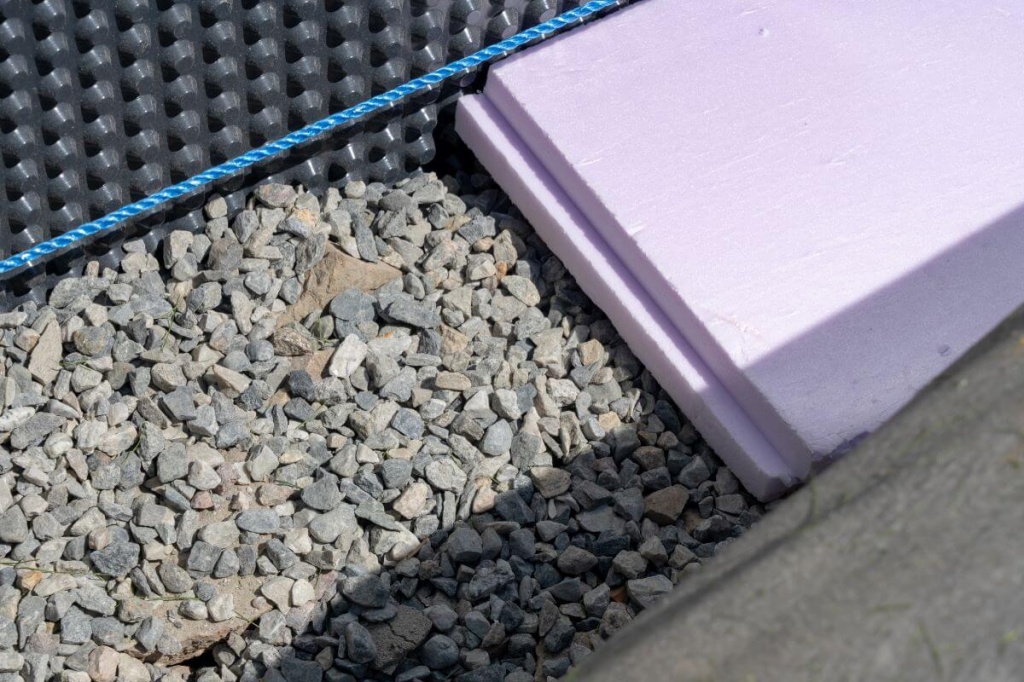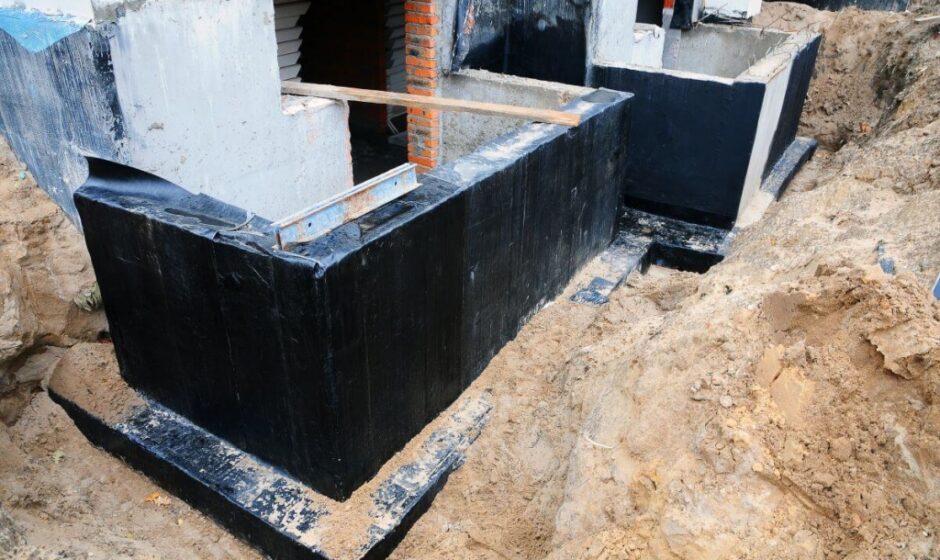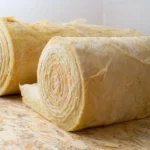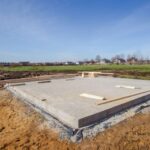Waterproofing a strip foundation is a procedure aimed at protecting a concrete monolith from atmospheric moisture, as well as groundwater and meltwater contained in the soil. Work of this type differs in technology, materials used, and several other parameters. Let’s take a closer look at how the procedure is performed and what tools are required to obtain a high-quality result.
WHY IS IT NECESSARY TO CARRY OUT WATERPROOFING WORK?
Strip foundation is one of the most popular solutions in the field of private housing construction. It is a closed ribbon running under all the external walls of the building and internal partitions. It is made of concrete with base reinforcement using a three-dimensional frame. The finished structure is strong, reliable, and durable. With the correct depth level, the formation of distortions and other defects is excluded. However, one of the main destructive factors affecting such structures is ordinary water. It is capable of eroding cement stone upon contact with it, creating the necessary conditions for corrosion of the reinforcement inside. In addition, moisture entering through small capillaries in winter can cause cracks and destruction of the tape due to freezing and increase in volume. Thus, in order to ensure a long service life, it is imperative to carry out waterproofing procedures aimed at creating barrier layers for water penetration inside.
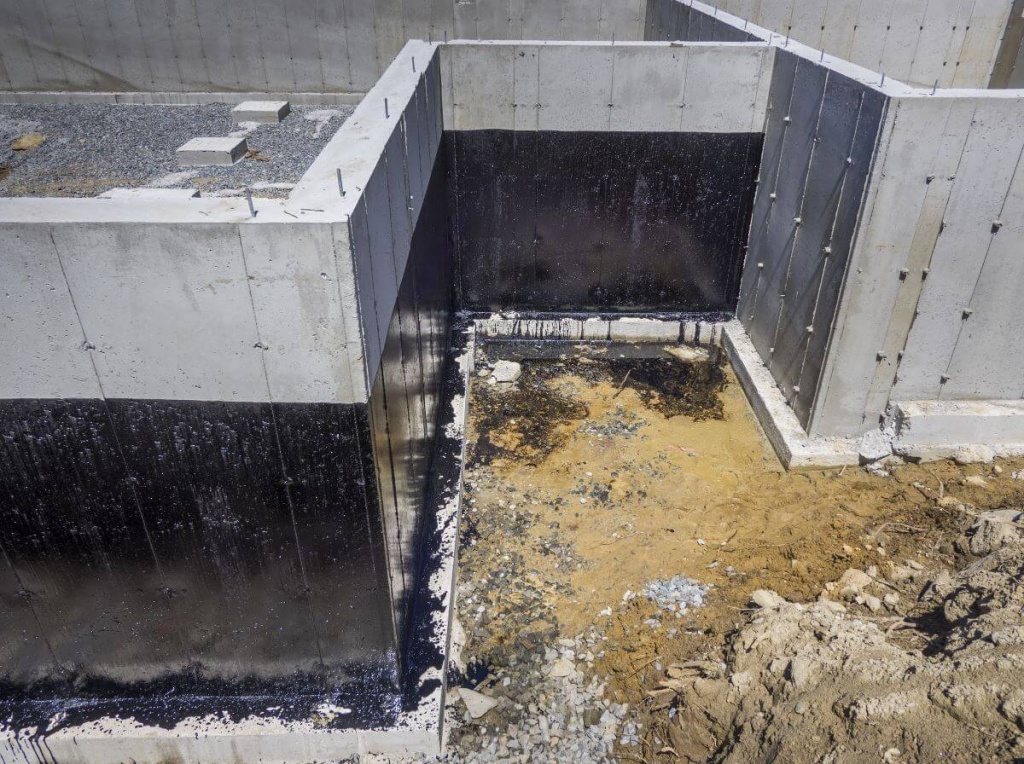
METHODS FOR ORGANIZING WATERPROOFING OF STRIP FOUNDATIONS
Construction technology provides several basic ways to protect and increase the moisture resistance of concrete structures. There are the following methods of waterproofing according to the execution method:
- horizontal – provides for the preparation and strengthening of the lower part of the base with the help of special compounds and materials, as well as the organization of drainage structures;
- vertical – for reliable protection, the body of the monolith is treated with waterproofing materials from the outside and outside, thereby blocking the penetration of moisture inside;
- combined option – involves combining both methods described above to obtain the desired result.
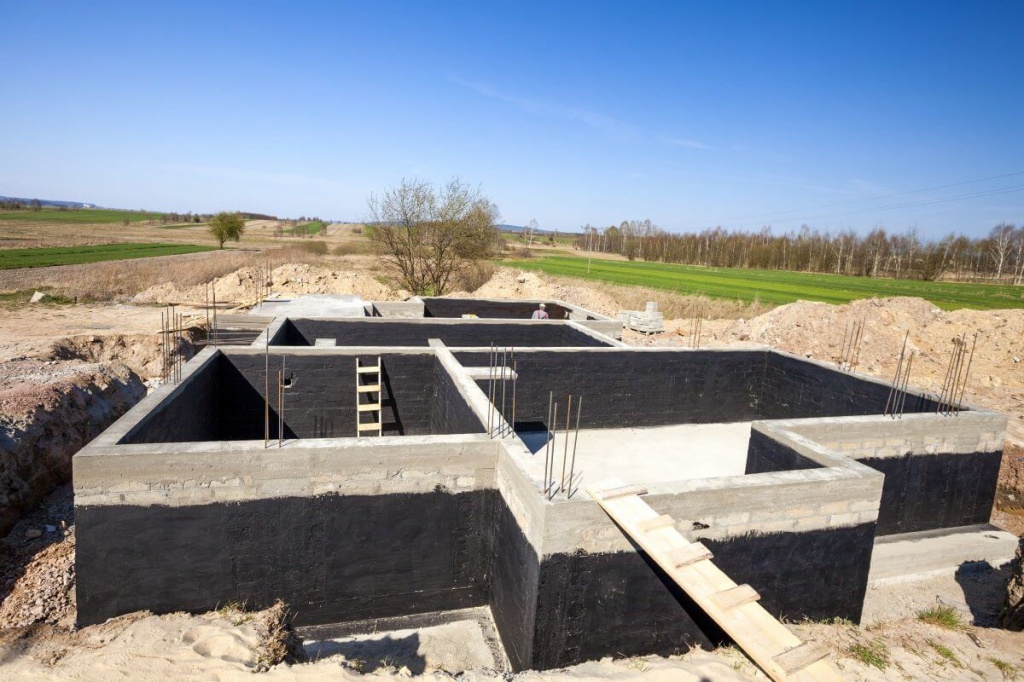
A wide range of different additives are also used to increase the hydrophobic properties of concrete. When introduced into the composition, they provide compaction of the solution, and reduce the number of external open pores and internal capillaries through which moisture can spread. Let us consider in more detail the main methods and options of work.
HORIZONTAL
The horizontal type of waterproofing of strip foundations is aimed not so much at protecting the base from moisture, but at a general reduction in negative impact factors. It provides waterproofing of the supporting part of the base, for which the following work is carried out:
- the bottom of the trench dug for pouring the foundation is compacted and leveled;
- a sand cushion is poured to a height of 30 cm. After compacting it, a gravel cushion of the same thickness is poured and also compacted;
- then a screed based on lean concrete is poured over the surface, which is necessary for the initial formation and strengthening of the load-bearing layers;
- the screed is treated with waterproofing compounds, bitumen mastics, or roll materials of suitable size are laid on it;
- At the final stage, the formwork is placed and concreting is carried out.
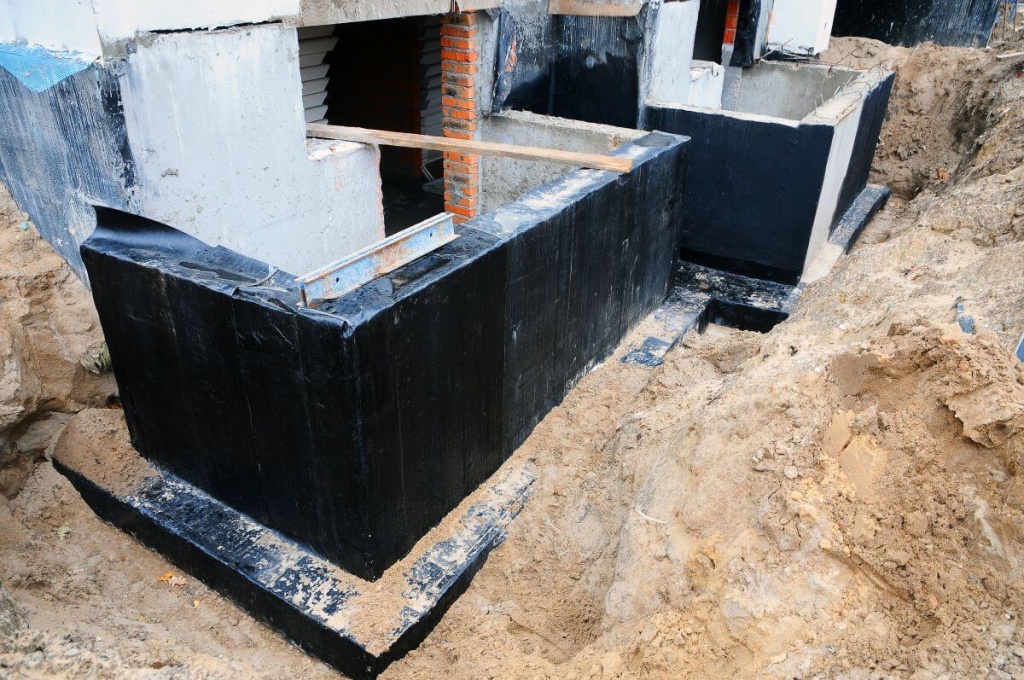
This procedure allows you to significantly reduce the capillary suction of moisture and eliminate its negative impact. The depth level is calculated individually, based on the bearing capacity of the soil. Also, for horizontal waterproofing, it is necessary to install a drainage system. To do this, perforated drainage pipes are laid along the perimeter of the building next to the foundation, and sand and gravel are sprinkled to obtain a permeable layer. At a distance of at least 20 meters from the house, a pit is dug into which a container is installed to receive wastewater, which in turn is connected to the drainage system through a pipeline that has an appropriate slope to organize gravity flow. A detailed design of the system must be ordered from specialists who can carry out the necessary calculations and provide a solution taking into account all the features of the object.
VERTICAL WATERPROOFING
Vertical waterproofing is much simpler to perform. As a rule, it is used in cases where the site on which construction is taking place is located on fairly dense soils with good load-bearing abilities. There is no risk of flooding of the area, and groundwater is at a fixed depth and does not come into contact with the foundation. The whole point of the work is that with the help of special tools and materials, the vertical part of the foundation is processed to obtain a reliable barrier layer that excludes contact with the ground, as well as the spread of capillary moisture throughout the structure.
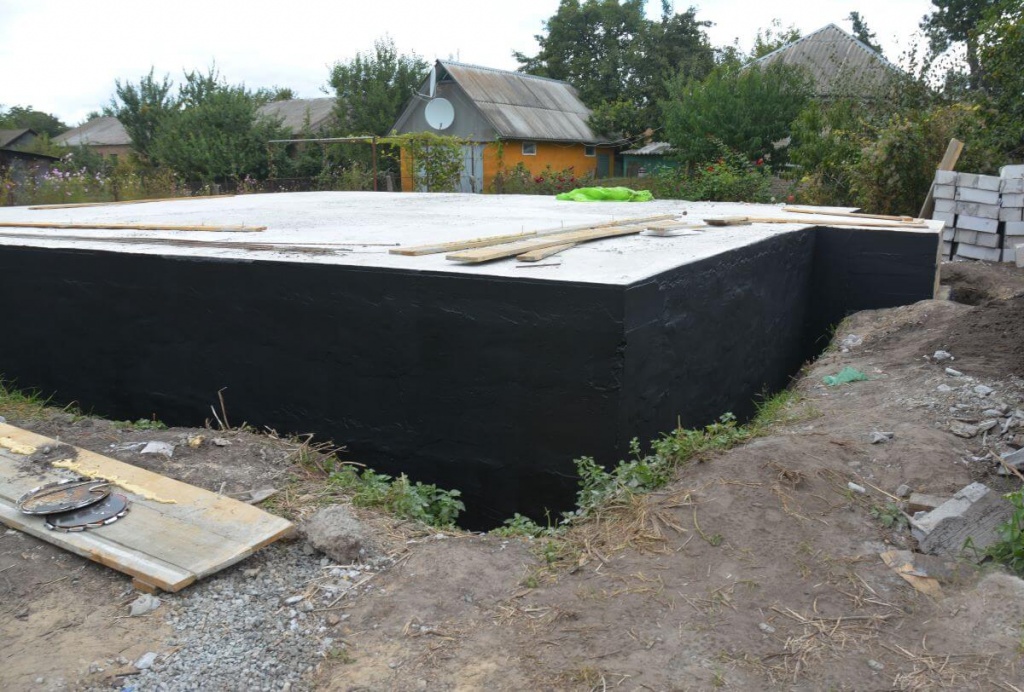
It is recommended to carry out work at the initial stage of construction, immediately after the concrete has hardened and gained strength. The advantages of this method include simplicity, high speed of work procedures and versatility.
MATERIALS FOR VERTICAL WATERPROOFING
Vertical waterproofing requires the use of high-quality materials that can withstand not only moisture, but also mechanical movements of the soil, and often aggressive chemical components contained in groundwater. To carry out the work, you can use the following types of materials:
- cement coating mixtures – a special feature is that their composition is based on cement, which means they are suitable for the entire range of mineral surfaces and, of course, monolithic strip foundations. To improve performance properties, the composition is modified with various additives and additives. There are one-component and two-component mixtures, in which a specialized composition based on polymer materials dissolved in water is used for mixing. After preparation, the cement coating takes on the format of a liquid paste, which fits well on vertical surfaces and is applied with a spatula;
- rolled materials – made based on bitumen with a fiberglass frame. Modern varieties of rolled waterproofing have high tensile strength and can withstand temperature changes without loss of physical properties and performance characteristics. Depending on the composition and other features, they are applied to the surface using a directional burner or glued to special mastics that provide the necessary strength for the connection. They are used quite rarely due to the complexity of installation on vertical surfaces;
- bitumen and rubber-based mastics are the best solutions for treating vertical walls of monolithic foundations. Mastics are supplied in the form of ready-to-use liquid formulations, consisting of bitumen and additives that modify their working properties. Application occurs using a brush or roller, which significantly saves time and creates a thin monolithic, and seamless layer on the surface. Able to penetrate inside, increasing adhesive properties.
